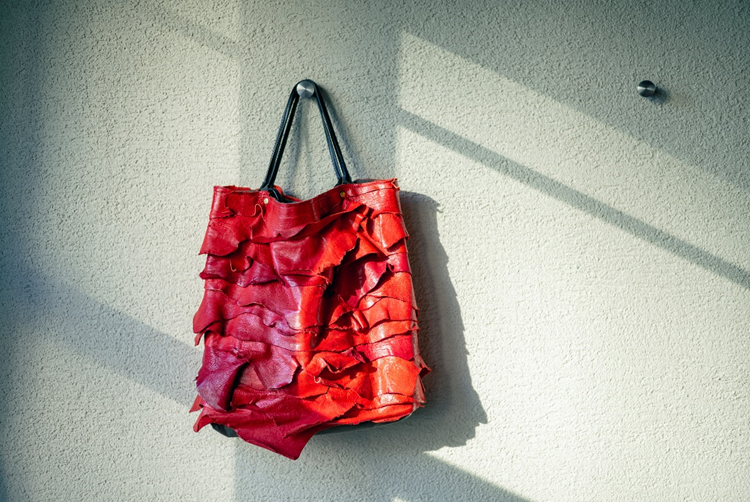
Ezo Shika, also known as Yezo Sika Deer or simply Hokkaido Deer in English, are the ubiquitous deer species that is found throughout Japan’s most northern prefecture. Without a natural enemy and no longer at risk of losing habitat due to excessive logging, the deer population in Hokkaido (and indeed, most of Japan) has exploded in recent years, prompting many experts to consider ways to limit their growth. Having too many deer can lead to crop damage, bark stripping, soil erosion, car accidents, and reduced tree diversity, putting Hokkaido’s beautiful natural habitat at risk. However, the two primary options to control the deer population, mass slaughter and the introduction of wolves, come with their own risks. With the government seemingly opting for the former as of time of writing, one lingering question will center on how to dispose of the animals in a moral and sustainable way.

Enter Kiriko Takase, who has had one vision since 2008: the incorporation and utilization of Ezo Shika into her art and designs. Growing up in a hunting family, her entire life has been concerned with the deer and the sometimes-uncomfortable reality of how to deal with their death. She recalls: “For most of my life, the deer have simply been discarded. Their meat was seen as not being palatable, while nobody even thought of using their leather.” Today, deer meat has seen a renaissance at Sapporo’s many Izakaya. As for the leather, Takase has done her part, launching a pioneering venture that exclusively utilizes leather from Hokkaido’s deer in a wide variety of bags, wallets, and other accessories.

“I realize it is quite unusual, especially in Japan, to regularly go hunting, but that is just how my family was” explains Takase. “However, ever since I was a little girl, I really wanted to give the deer a life after death – and utilizing their leather seemed like the perfect way.” As she grew older, studying at a design school in Tokyo and honing her craft, she quickly realized that it was indeed possible to make her idea a reality. She returned to her hometown of Sapporo and started a journey that would eventually lead to the launch of her brand “24KIRICO”.
It would not be easy, however. “As the name suggests, I launched 24KIRICO at the age of 24, and when I tried to procure deer leather to make fashion, many local companies simply laughed me out the door.” Indeed, Takase realized that she had to go as far as to convince hesitant potential suppliers one by one, essentially establishing a supply chain by herself. “Another aspect of procuring the leather was that unlike most commercially available leather, deer are wild animals and are not being actively monitored. This makes the leather “unreliable”, with huge variations based on age as well as many imperfections.” Takase remained undeterred, and eventually landed enough yield to begin making products. However, here too more challenges would await.

“Deerskin is extremely difficult to tan, consisting of a complex process that takes much longer when compared to cowskin, for instance.” This is the reason why there are not many deer leather products on the markets today. However, there are also many advantages to using deer. “Deer leather is both strong and soft, a very desirable combination. Furthermore, the ruggedness of the leather as well as its durability give it an edge over other types of leather.” Coming from a wild animal, another trademark of Takase’s products is each piece’s uniqueness. “Of course, I replicate my design to make multiple products. However, the characteristics of the leather guarantee that each piece is one-of-a-kind, so to say. Every strip of deer leather has unique natural blemishes, imperfections, and scratches, making their texture unique.” Takase embraces these imperfections and, together with her inspired design, makes some truly memorable leatherware.
Thus far, her most successful products have been her handbags. These feature Takase’s trademark design centered on rugged elegance, mixed with popping colors, primarily red and blue but also a multitude of brown tones. In recent years, Takase’s products have also garnered attention from outside of Japan. Indeed, she was even able to exhibit at the famous Salone del Mobile in Milan. But, aside from prolonging a deer’s life, what was been Takase’s main vision in advancing her brand?

“I want to create products that can only be made here, in Hokkaido. Historically, this prefecture has been Japan’s frontier land, and I wanted to maintain this spirit in creating something new, something pioneering.” The fact that Hokkaido’s deer have become a societal issue only deepened her resolve. “Here in Hokkaido, deer are now being treated as a “problem”, and I wanted to change this way of thinking, to add value to something most people see as a pest. These are beautiful creatures, and they deserve to be showcased in a beautiful way. I hope to do this through my designs. I also hope that I can do a small part to dealing with the deer population in a more sustainable manner.”
Her inspiration also comes from another aspect of Hokkaido’s culture and history, the indigenous Ainu. “In Ainu culture, the deer were one of the animals that did not become a kamuy, or god. Here too, it seems that our deer have been undervalued” Takase says while cracking a smile. However, as part of creating something that is unique to Hokkaido, she also began incorporating Ainu designs into her bag. “Sadly, there are not too many Ainu left today, so I hope to be able to celebrate their culture in the only way I know how.”
Clearly, you cannot get more Hokkaido than Takase’s products, and knowing this background makes her stunning designs even more charming. To hear Takase sum it up: “The Ezo Shika have become my lifework.” We cannot wait what other designs she has in store for us.
24KIRICO
https://24kirico.com/


